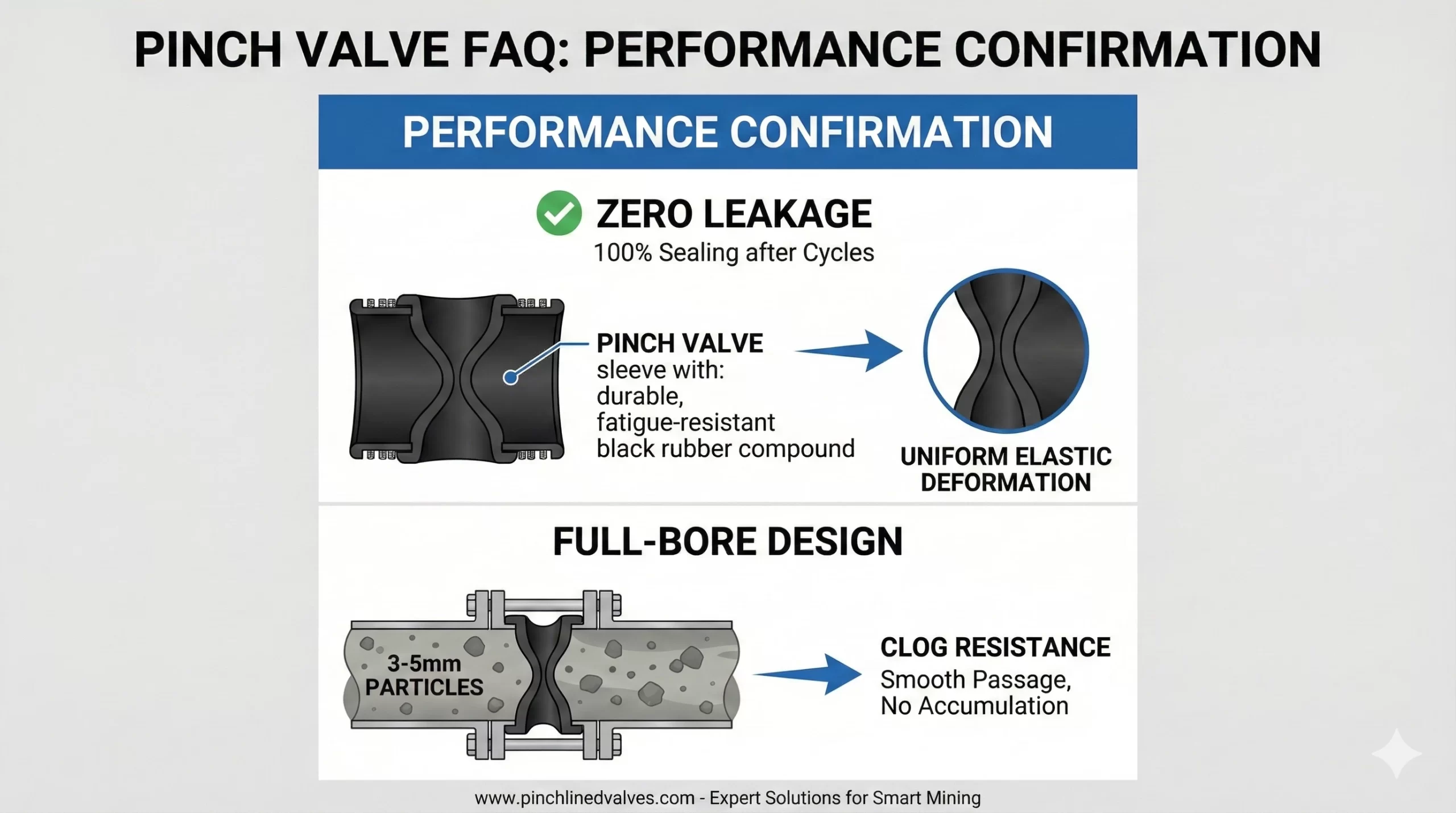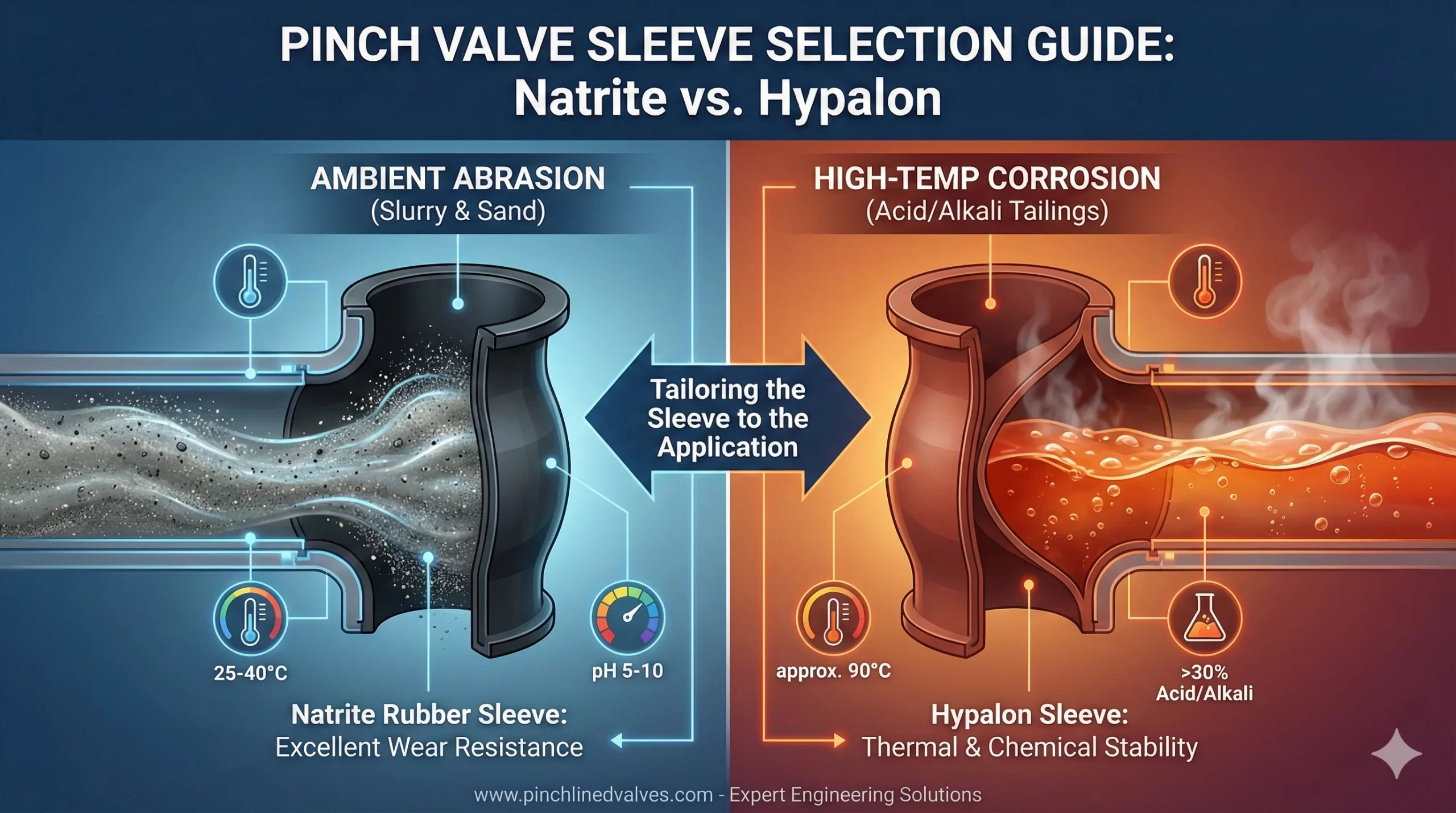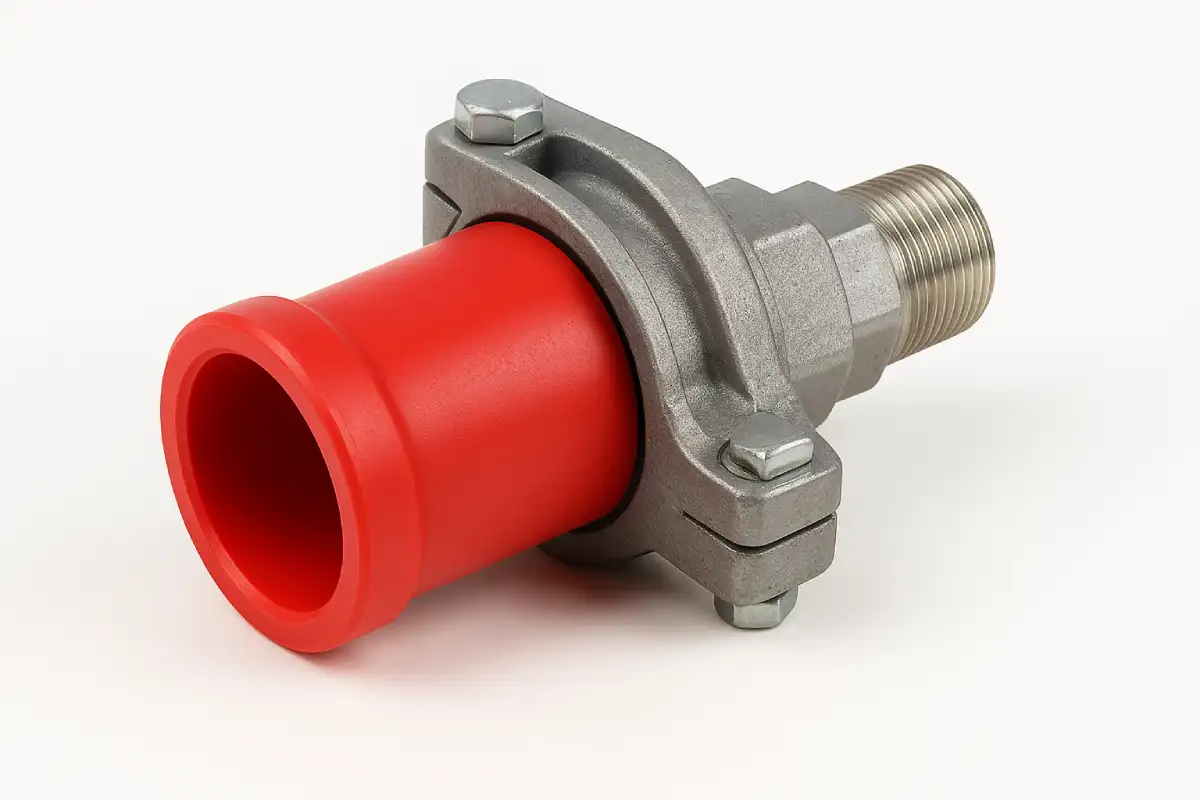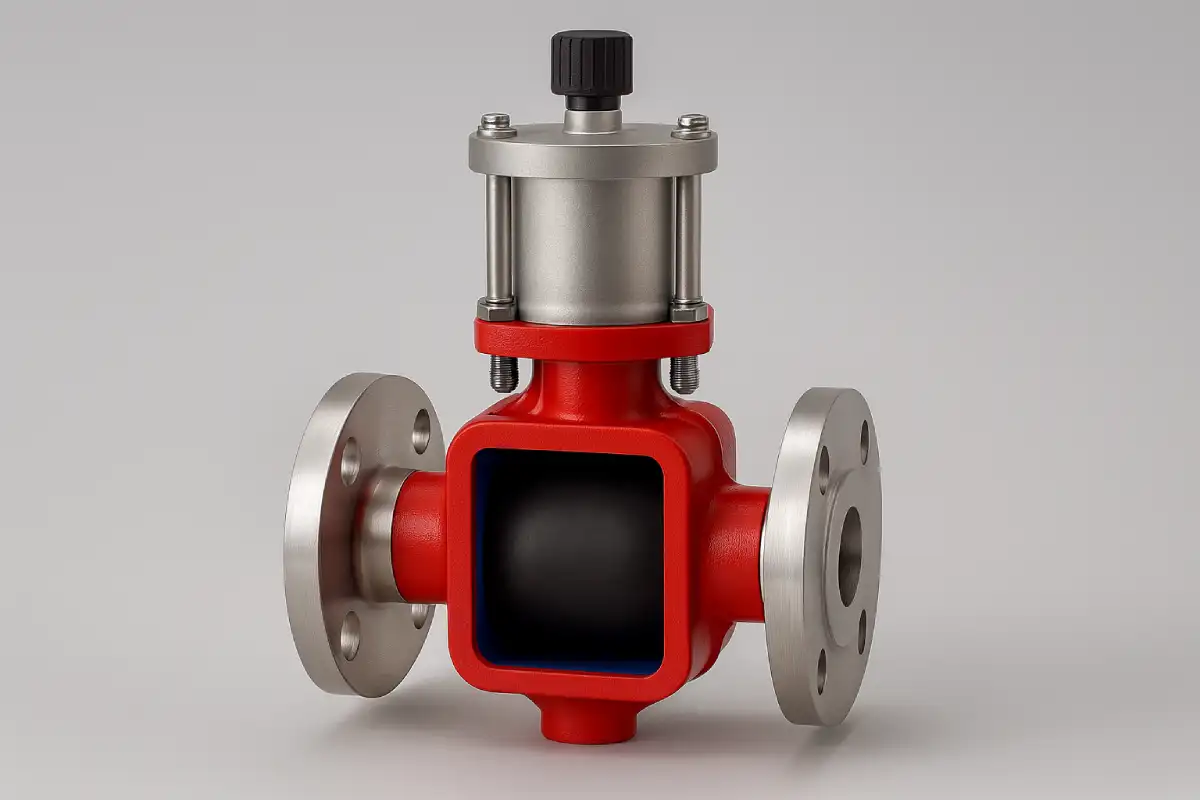

Le moyen le plus efficace de résoudre les problèmes de vanne à pincement est d'identifier la cause première au plus tôt, qu'il s'agisse d'usure du manchon, d'une défaillance de l'actionnement ou de fuites, et d'appliquer des étapes de dépannage ciblées pour restaurer les performances.
Les vannes à pincement sont appréciées pour leur durabilité et leur simplicité dans la manipulation des boues, des matériaux abrasifs et des fluides corrosifs.
Mais comme tout composant, ils peuvent développer des problèmes au fil du temps.
En comprenant comment reconnaître et résoudre ces problèmes, les opérateurs peuvent prolonger la durée de vie de la vanne et éviter des temps d’arrêt coûteux du système.
Ce guide de dépannage des vannes à pincement décrit les problèmes les plus courants, leurs causes et les étapes pratiques pour les résoudre ou les prévenir.
Un problème fréquent avec les vannes à manchon est que le manchon ne s'ouvre ou ne se ferme pas complètement. Cela peut entraîner une réduction du débit, voire l'impossibilité d'arrêter complètement le fluide.
Causes possibles:
Étapes de dépannage:
Si le problème persiste après avoir vérifié ces facteurs, envisagez de remplacer le manchon ou de consulter le fournisseur de vannes à pincement pour évaluer si un modèle différent est plus approprié à l’application.
Les vannes à manchon sont réputées pour leur capacité de fermeture étanche. Si vous constatez des fuites, surtout lorsque la vanne est fermée, le problème vient probablement du manchon.
Causes possibles:
Conseil de dépannage pour les vannes à pincement:
Dans les vannes à manchon pneumatiques, le bon fonctionnement dépend du maintien d'une pression d'air constante. Si la vanne ne répond pas correctement ou tarde à s'actionner, il peut y avoir un problème de pression d'air.
Causes possibles:
Conseils de dépannage:
Des contrôles réguliers de votre système de contrôle pneumatique contribueront à maintenir un fonctionnement constant de la vanne et à prévenir les pannes d'actionnement inattendues.
L'usure du manchon est une partie normale du fonctionnement de la vanne à pincement, mais si elle se produit trop fréquemment, c'est un signe que les conditions du système peuvent exercer une contrainte excessive sur le manchon.
Causes courantes:
Conseil de dépannage pour les vannes à pincement:
De nombreux fabricants de vannes à pincement proposent des manchons spécialisés pour différentes conditions, tels que le caoutchouc naturel pour l'abrasion générale ou l'EPDM pour la résistance chimique.
Un bruit ou des vibrations inhabituels peuvent indiquer des turbulences, un dimensionnement incorrect ou une tuyauterie non supportée à proximité de la vanne.
Causes probables:
Corrections:
La réduction des vibrations prolonge non seulement la durée de vie de la vanne, mais protège également les composants adjacents contre une usure prématurée.
La maintenance préventive est la méthode la plus efficace pour minimiser les problèmes de vannes. Voici quelques bonnes pratiques générales de dépannage des vannes à manchon :
Inspecter les réglementationsrly : Une inspection de routine des manchons, des systèmes pneumatiques et des fixations peut aider à détecter les petits problèmes avant qu'ils ne s'aggravent.
Durée de vie des manchons de chenille:Conservez des enregistrements de la durée de vie de chaque manchon dans des applications spécifiques pour anticiper le moment où les remplacements sont nécessaires.
Choisissez le bon type de valve et le bon matériau:Travaillez avec des fabricants de vannes à pincement expérimentés pour sélectionner la configuration de vanne adaptée à vos conditions de fonctionnement.
Personnel du train: Assurez-vous que les opérateurs comprennent le fonctionnement des vannes à pincement et comment reconnaître les premiers signes de problème.
Les vannes à pincement sont robustes et simples, mais elles nécessitent également une attention occasionnelle pour rester en parfait état.
Des problèmes de manchonnage aux problèmes d'actionnement, être proactif dans le dépannage des vannes à pincement garantit des performances fiables et minimise les temps d'arrêt imprévus.
Avec une routine de maintenance et une sélection de composants appropriées, les vannes à pincement peuvent servir de solutions de contrôle de débit nécessitant peu d'entretien, même dans les environnements les plus difficiles.
Ressources:
Défaillances typiques des vannes à pincement : comment résoudre ces problèmes
Conseils de dépannage pour la vanne de régulation à pincement
Comment trouver et résoudre les problèmes avec votre système de vannes à pincement

Question 3:Performance Confirmation:Your documentation mentions “zero leakage” and “clog resistance.” We would like to confirm: After long-term operation, will repeated compression cycles cause sleeve fatigue leading to sealing failure? Is the full-bore design truly effective for slurries with larger particles (e.g., 3-5mm)? Answer 3:Confirmation of “Zero Leakage” and “Clog Resistance” Performance (1)Zero Leakage Reliability: Our […]

Material Selection:We are dealing with different working conditions: (1)Question1: Condition A: Ambient temperature (approx. 25-40°C) slurry containing fine sand, where wear resistance is the primary consideration, with weakly corrosive media (pH 5-10). Answer1:(ambient temperature, fine sand, low concentration corrosion, high wear resistance): Preferred recommendation: Natrite Rubber sleeve. Reason: The core advantage of Natrite Rubber lies in its […]

A pinch valve adapter connects a pneumatic pinch valve or manual valve to pipes, tubes, or other parts of a system. With this connector, the valve can manage liquid or gas flow without leaks or strain. It also lets the valve fit in tight or unusual setups. This reduces operational risks and improves overall performance. […]

Yes, they are. Hygienic pinch valves are specially designed to keep things clean and safe, which is why they’re so common in food, pharmaceutical, and biotech environments. Their smooth interior and dead-zone-free design make cleaning quick and reliable. And if the term is new to you, don’t worry, this article will walk you through what […]



